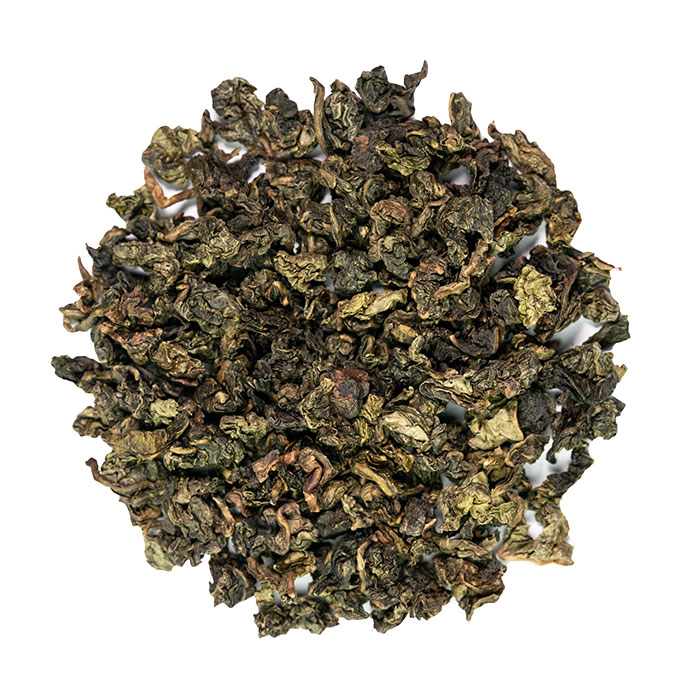How to Brew Tea: A Perfect Cup Every Time
Learning how to brew loose leaf teas is not only fun, if gives you an opportunity to taste thousands of different flavors. Proper brewing may extract even the most uncommon notes from pure tea leaves, such as freshly mowed lawn, or cooked artichoke.

- Choose clean teapot of an appropriate size. If you are making tea for one person only, 150-250 ml teapot will be a perfect choice.
- Boil fresh spring water.
- Preheat your teapot by pouring hot water in and out.
- Measure the right amount of tea leaves.
- Place the tea leaves in a heated teapot.
- When the water has cooled down to an appropriate temperature, pour it over tea leaves in circular movements.
- Put the lid on and wait for 1-5 minutes, depending on the type.
- If your teapot doesn’t have a build-in strainer, use a regular one to strain the leaves.
How to Cold Brew Tea
Cold brewing is one of the easiest brewing techniques. Not only it’s almost impossible to ruin your tea by cold brewing it, but you will be able to enjoy a whole different set of flavors. Cold brewing works best with green tea and very well with white, oolong and black tea. Don’t cold brew compressed teas like pu’erh tea bricks or nests. Leaves will need a lot of hours to expand and you will get a very weak infusion.- Choose 1-1.5 liters glass pitcher or a teapot.
- Add 1-2 spoons of tea leaves (or one heaped spoon).
- Top up with room temperature or lukewarm water.
- Cover with a lid to keep the infusion safe from fridge odors.
- Wait for at least 3-4 hours. Green tea will brew faster than herbal or oolong tea.
- Serve with ice.
How to Brew Iced Tea
Cold brewed tea and iced tea are usually made in a different way. While cold brewing results in a gentler, more delicate flavor, regular iced tea needs to be strong – often strong enough to handle sugar, honey or lemon. Unlike cold brewing, you can use any type of tea for making an iced tea. To make a real full flavor iced tea, make a cup of hot tea first.- Choose a smaller teapot enough for making one cup of tea.
- Add 2-3 teaspoons of loose leaf tea.
- Boil water and let it cool down to around 158 °F for green tea, 176 °F for oolong, 203 °F for black tea. Use boiling water for herbal tea.
- Steep the leaves for at least 5-10 minutes.
- Fill the shaker with ice.
- Strain and pour over the ice. Add honey, sugar or even milk.
- Shake for 30 seconds.
- Fill the glass with ice and add tea.
How to Brew Tea by tea type
- How to Brew Rooibos Tea
- Brewing Black Tea Guide
- Brewing Green Tea Guide
- Brewing White Tea Guide
- Brewing Oolong Tea Guide
- Brewing Herbal Tea Guide
Best Tea Brewing Temperatures
Every tea is different, and unless you are making herbal infusion, make sure to know how much heat your tea leaves can take. Water temperatures for brewing tea can range from 104 °F for Gyokuro green tea, to 212 °F for Assam black tea.Black Tea
Black teas are the most unforgiving of all tea types. They are usually made with 212 °F, although a bit cooler water (203 °F), might be more suitable. The only exception are Darjeeling teas that should be brewed using cooler water – of around 185-194 °F.Green Tea
Lower temperatures will bring out more sweetness and savory notes from green teas, while higher temperatures extract out more catechins, caffeine and other substances, resulting in a bitter and astringent cup. To stay on the safe side, 167 °F will be suitable for most green teas. You can use a higher temperature for a second infusion.White Tea
White tea handles high temperatures quite well. It’s not uncommon to make Silver Needle using 194 °F, with short steeping time. The best temperature for western style brewing will be around 176 °F.Oolong Tea
Most oolong teas can handle high water temperature, but may not handle long steeping time. Oolong tea shaped in small balls like Ti Kwan Yin needs more time to expand and release flavor and nutrients than other types of oolong tea, for example Red Robe Oolong. 185-194 °F is the best temperature for most oolong teas. The most unforgiving oolongs are dan congs, that should almost never be brewed using western style brewing. They may become very bitter.
Ti Kwan Yin oolong tea
Herbal Tea
Most herbal and fruit teas are made using boiling water. They may be steeped for a very long time without becoming bitter. The exception are teas that contain orange or lemon peel, that may give a bitter flavor to your cup, or medicinal herbs. Pay attention to recommended water temperatures and steeping time for blends including those ingredients. Always follow recommendations for each and every herbal tea to prevent possible side effects.Rooibos Tea
Rooibos is a herbal tea and can be brewed using boiling water. It’s very forgiving, so even if you forget to remove the tea leaves for hours, it will never become bitter.Final Brewing Tips for a Perfect Cup of Tea
- Choose quality tea ware.
- Use clean tea kettle to boil water, preferably the one used for boiling only spring water.
- Keep teaware clean, but avoid using detergents.
- Preheat the teapot by pouring hot water into a clean empty teapot.
- Store your loose leaf teas properly– away from mold, moisture, sunlight, air or heat.
- Experiment with water to leaf ratio until you get the best flavor.
- Experiment with spring water types, but avoid tap or distilled water.
- Make time for tea brewing and don’t rush the process.
More from:
SLL



Leave a comment